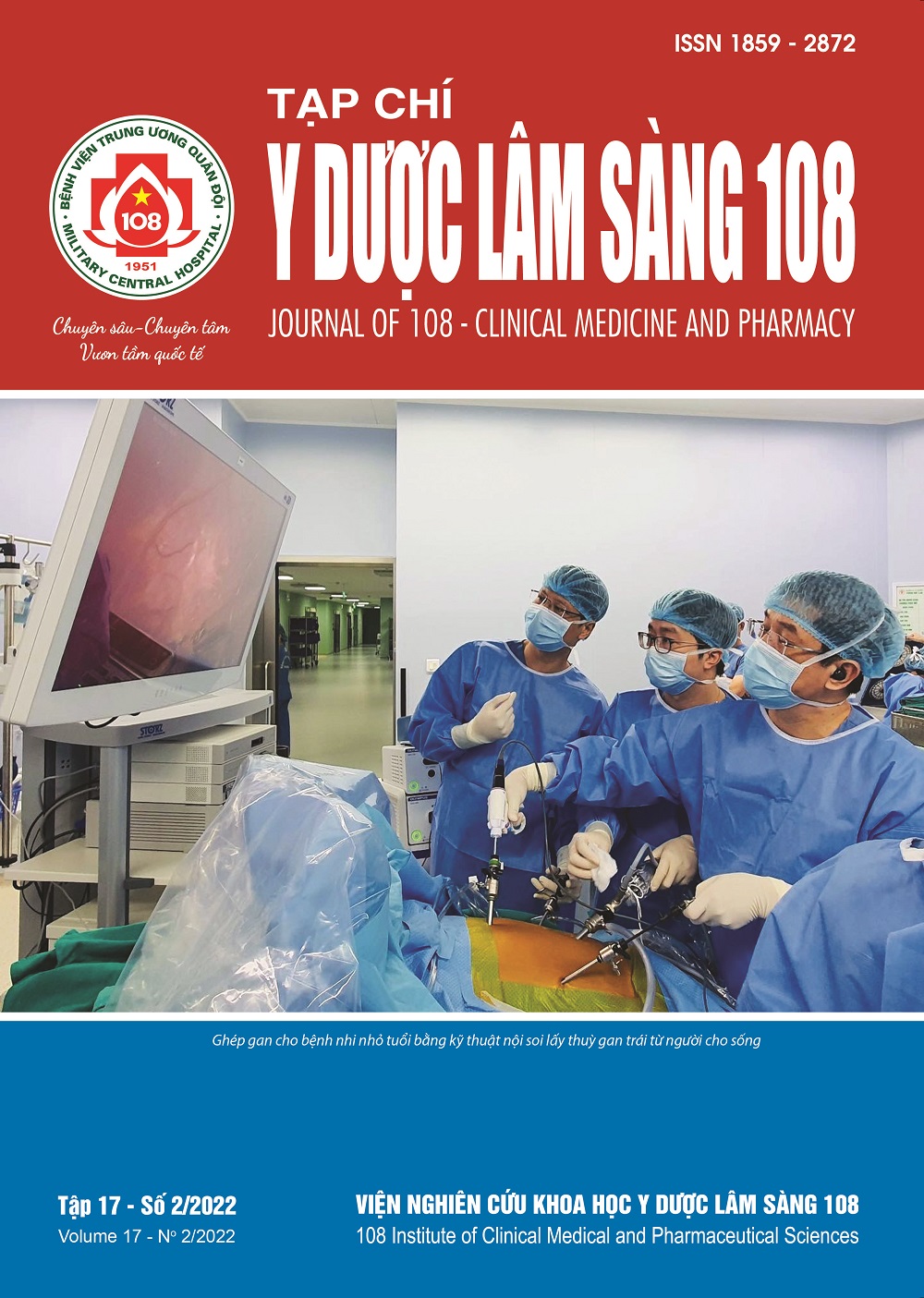Prevalence of Neisseria gonorrhoeae, Chlamydia trachomatis and HPV infections detected by realtime PCR among women of reproductive age at Hanoi Obstetrics and Gynecology Hospital
Main Article Content
Keywords
Abstract
Objective: Our study aimed to investigate the prevalence of Neisseria gonorrhoeae, Chlamydia trachomatis and HPV infections detected by realtime PCR among women of reproductive age at Hanoi Obstetrics and Gynecology Hospital. Subject and method: This cross-sectional descriptive study recruited 4988 women aged of 19 - 49 and having gynecological examination at Hanoi Obstetrics and Gynecology Hospital from 1/1/2015 to 31/12/2015. 1506 patients were tested for only HPV, 3199 patients were tested for both Neisseria gonorrhoeae and Chlamydia trachomatis, 283 patients were tested for all (Neisseria gonorrhoeae, Chlamydia trachomatis and HPV). Each participant had an interview, gynecological examination including cervical samples for Neisseria gonorrhoeae, Chlamydia trachomatis and HPV detection by realtime PCR. Result: The prevalence of Neisseria gonorrhoeae infection was 0.6%, Chlamydia trachomatis was 9.62%, HPV was 21.18% (one type infection accounted for 72.56% and the other was multitype infection; we found type 16 in 22.69% of patients and type 18 in 13.98% patients). 0,32% of patients were infected by both Neisseria gonorrhoeae and Chlamydia trachomatis, 2.12% were infected by both Chlamydia trachomatis and HPV. Conclusion: Prevalence of Neisseria gonorrhoeae infection was 0.6%, Chlamydia trachomatis was 9.62%, HPV was 21.18%. 0,32% of patients were infected by both Neisseria gonorrhoeae and Chlamydia trachomatis, 2.12% were infected by both Chlamydia trachomatis and HPV.
Article Details
References
2. Nguyễn Hữu Quyền và cộng sự (2015) Nghiên cứu tỷ lệ nhiễm HPV ở bệnh nhân đến khám phụ khoa tại Bệnh viện Melatec. Kỷ yếu Hội nghị Sản phụ khoa toàn quốc, tháng 12 năm 2015, tr. 78-82.
3. Tạ Thành Văn (2010) PCR và một số kỹ thuật y sinh học phân tử. Nhà xuất bản y học, Hà Nội, tr. 45-46.
4. Chen H, Luo L, Wen Y et al (2020) Chlamydia trachomatis and Human Papillomavirus infection in women from southern hunan province in china: A large observational study. Front Microbiol 11:827.
5. Rowley J, Vander Hoorn S, Korenromp E, Low N, Unemo M, Abu-Raddad LJ, Chico RM, Smolak A, Newman L, Gottlieb S, Thwin SS, Broutet N, Taylor MM (2019) Chlamydia, gonorrhoea, trichomoniasis and syphilis: Global prevalence and incidence estimates, 2016. Bull World Health Organ 97: 548-562. doi: http://dx.doi.org/10.2471/BLT. 18.228486.
6. Xiang J, Han L, Fan Y et al (2021) Prevalence and genotype distribution of human papillomavirus among attendees at a sexually transmitted diseases clinic in Urban Tianjin, China. International Journal of General Medicine 14: 1983-1990.
7. Trần Đình Vinh, Phạm Chí Kông, Huỳnh Minh Nhật và Lê Hà Yến Chi (2020) Tình hình nhiễm Chlamydia trachomatis ở bệnh nhân đến khám tại Bệnh viện Phụ sản - Nhi Đà Nẵng năm 2018 - 2019. Tạp chí Phụ sản 18(2), tr. 57-62. https://doi.org/10.46755/vjog.2020.2.1115.
8. Parish WL, Laumann EO, Cohen MS, Pan S, ZhengH, Hoffman I et al (2003) Population-based study of chlamydial infection in China: A hidden epidemic. JAMA 289: 1265-1273. doi: 10.1001/ jama.289.10. 1265.
10. Shi XB, Liu FY, and Zhang HW (2001) Study of Chlamydia trachomatis infection on cervical secretion of women with early pregnancy and secondary sterility. Hunan Yi Ke Da Xue Xue Bao 26: 169-170.
 ISSN: 1859 - 2872
ISSN: 1859 - 2872
